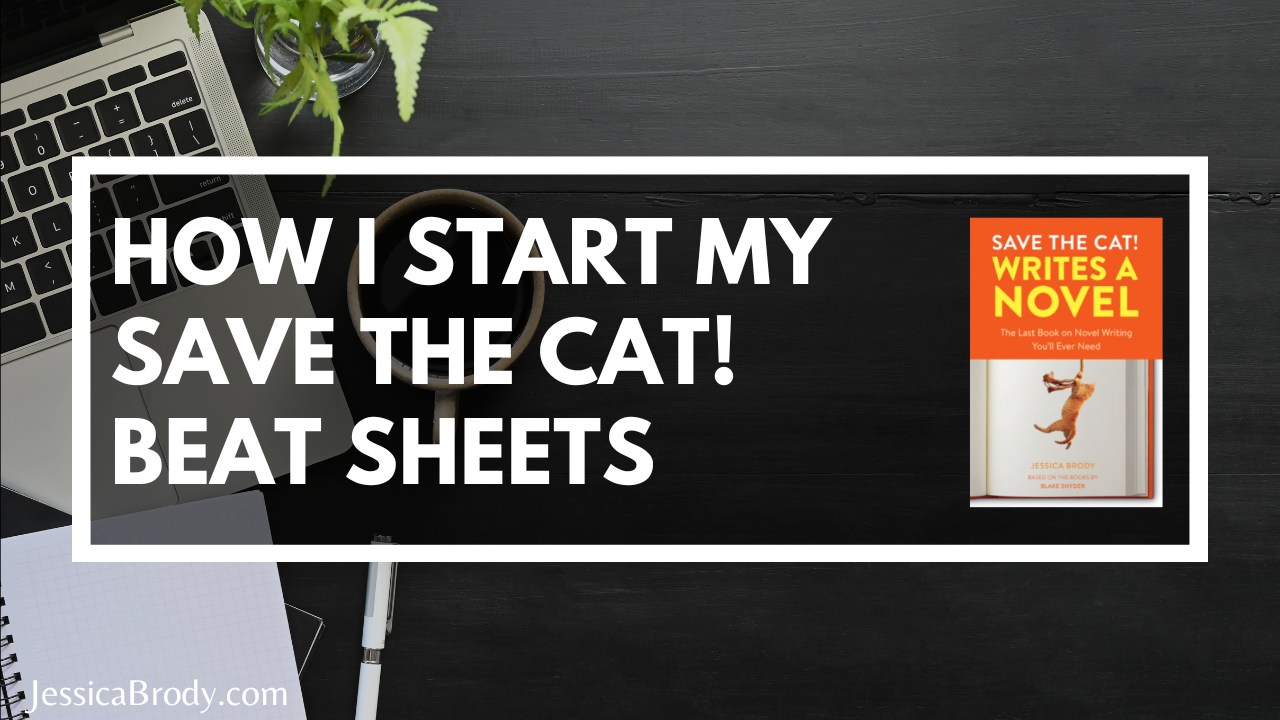How I Start My Save the Cat! Beat Sheets

“How do you approach the beat sheet?”
There’s a question I get asked a lot. Logically, you might think I start with the Opening Image and just work my way through, beat by beat, until I reach the Final Image.
But that’s not usually the case.
Although all of my novel brainstorm processes are unique, for the most part, I follow a very specific approach for starting my beat sheet. I find that this approach is especially helpful when I’m in the very early planning stage of a novel and I’m just trying to flesh out some initial ideas, but I don’t have a lot of details cemented in my mind yet.
I start with the “Foundation Beats.”
What are the Foundation Beats?
They are the major turning points of the story, meaning the moments where the story direction pivots. So, naturally, these are all single-scene beats.
The Five Foundation beats of any story are:
- Catalyst
- Break into 2
- Midpoint
- All is Lost
- Break into 3
(More on all the beats can be found in this blog post.)
These five beats are the tentpoles that the rest of the beats are strung between. Like how the Debate is strung between the Catalyst and the Break into 2. And similarly, the Fun and Games connects the Break into 2 to the Midpoint.
The foundation beats help form the basic structure of the story.

 For example, just look at how these 5 beats form the foundation of the Pulitzer-prize winner, The Goldfinch by Donna Tart (spoiler warning!)
For example, just look at how these 5 beats form the foundation of the Pulitzer-prize winner, The Goldfinch by Donna Tart (spoiler warning!)
- Catalyst – A terrorist attack on the Met kills Theo’s mother, kicking the story into action.
- Break into 2 – Theo moves from New York to Las Vegas with his dad (and makes the proactive decision to bring the painting he stole from the Met with him). This thrusts the story into the upside down world of Act 2 and sets Theo on a story-wide goal to keep the painting safe and hidden.
- Midpoint – Theo’s Dad is killed in a False Defeat, sending the story in a new direction and introducing a new goal for Theo: get back to New York to escape child protective services.
- All is Lost – An adult Theo discovers that the painting he’s been trying to keep safe for years…is gone. This connection to his mother and the day she died serves as a whiff of death and a low point of the story.
- Break into 3: Theo travels to Amsterdam with his childhood friend from Las Vegas (synthesis!) to recover the painting
Obviously, the novel has a lot more going on than these 5 beats. But I think it’s wonderful (and reassuring!) to see how even a 700+ page literary classic still has to have a solid structural foundation to stand on. And that structure is shaped by these 5 foundation beats.
That’s why I often find it easier to nail down these beats first, before tackling the other beats. Because they help shape the rest of the story.
So, I’ll usually set up my 5 “tent poles” and then figure out how to get my characters from tent pole to tent pole (using the longer, multi-scene beats.) When you have those single-scene beats established first, it gives you something to write toward (or plot toward.)
If you’re wondering, “What the heck do I fill the Fun and Games with? It’s soooo long!” ask yourself, “What do you want the Midpoint to be?” Because the Midpoint—the next tent pole after the Break into 2—should dictate what kind of plot points you establish in your Fun and Games in order to get to that Midpoint.
If you’d like to watch me walk through this very process, beat by beat, with one of my own novels, there’s a full Bonus Lecture in my Save the Cat! Novel Writing Course where I show you exactly how I use the Foundation Beats to kickstart my brainstorm.
So, if you’re struggling to start your own novel brainstorm or even your novel revision, or if you’re feeling overwhelmed with the task of juggling all 15 story beats, try starting with these five beats, and see if that doesn’t help you nail down some helpful foundations to work with.
Filed under: Tips for Writers Writing Mastery Tagged with: fast drafting fiction writing LMAP novel writing plotting save the cat save the cat beat sheet save the cat writes a novel STC Starter Kit (LMAP) Tips for Writers writing hacks writing mastery writing tips writing tools